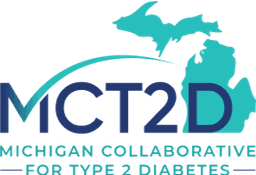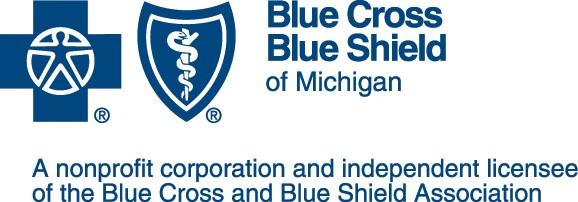Case Studies in Collaboration is an occasional web series developed by the Michigan Collaborative for Type 2 Diabetes. In long and short form video and text, we profile a physician organization (PO), practice, or clinical team from across the MCT2D collaborative. Here, we feature Henry Ford Health's Diabetes Empowerment Group.
NEWS & EVENTS
SPECIALTY CARE
A clinical champion and her patient share insights into Patient Assistance Programs (PAPs)
Dr. Heidi Diez, PharmD, is a clinical pharmacy specialist at Michigan Medicine, with 17 years of experience in both community and ambulatory care pharmacy. Dr. Diez’s current clinical practice is on an integrated primary care team at Domino Farms Family Medicine in Ann Arbor.
Heidi’s first phone call to the Eli Lilly Foundation was 37 minutes. Her second call was 42 minutes. And then 53. The fourth call she didn’t check the time. “I don’t have time to be doing this. But my patient is out of meds.”
For the past four months, Heidi’s patient Mark had been getting his diabetes medications—Basaglar, long-acting insulin glargine, and Trulicity, a weekly GLP-1 Receptor Agonist—at no cost, thanks to the Lilly Cares Patient Assistance Program (PAP).
Mark, a musician, had “taken a financial hit during COVID.” In late 2021, with Heidi’s guidance, he applied to the Eli Lilly Foundation PAP. By December, he received a free four-month supply of both Basaglar and Trulicity. They were both so excited.

Dr. Diez worked with the patient to optimize his dose, seeing promising improvements. She called the Lilly Cares program in February 2022 to let them know she’d be sending a new prescription with a dosing change and got verbal approval from the program. But the next month, Heidi’s patient reached out, letting her know that he had no medications.
Another phone call to the PAP hotline revealed that the patient’s eligibility had expired without notice, at the end of the calendar year, just one month after he had enrolled.
The patient would have to reapply. When he submitted a new application, he mistakenly checked “Private” insurance instead of Medicare, a common confusion with individuals who have commercially-managed Medicare Advantage coverage. This delayed his application. The program then also asked for a wet signature for the reauthorized prescription, which delayed it some more.
Heidi reflects on the phone calls, the check boxes, the faxes. “Now I know.” As the pharmacy lead for the Michigan Collaborative for Type 2 Diabetes, she wants to make this process easier for the clinical pharmacists, physicians or care team members who help patients navigate medication affordability.
“The beauty of having a Pharm D is that you get to have 15 to 20 mins with patients to cover one chronic disease - diabetes. Going over how they’re tolerating their medications, adherence, cost, that’s something that the pharmacist truly brings to the team,” Heidi adds. It’s through conversation, listening, and trust building over time that Dr. Diez is able to ask a critical question:
‘How often do you find that you can’t afford your copays?’ If you don’t ask, then you don’t know.If I have an inkling that cost might be an issue, I might ask the same question in a different way, if you don’t get the response.”
It takes time. But Dr. Diez sees it as a major “perk” of the job of what she’s able to do as a clinical pharmacist. “In building that connection, they feel comfortable sharing.”
For all the minutes on hold, all the miscommunications about income caps and ink, Heidi sees the pay off, the real progress that can be made for and with patients.
With Heidi’s leadership and dogged evaluation of each program, we have developed reference guides for Patient Assistance Programs for patients with Medicare Part D and Copay Coupon programs for patients with commercial insurance, with tips like which programs allow for electronic uploads versus mail or fax, links to the PDF applications, shorthand to the income and other financial eligibility rules for each program, and the expiration of each program. Our newest resource is the Affording your Type 2 Diabetes Care: A Patient Toolkit on Insurance Coverage and Cost, with worksheets and plan language definitions, created in collaboration with our Patient Advisory Board.
THREE PAPS REVIEWED

Suzanne, a former research assistant in a neuroradiology lab, animal lover, is another patient who worked with Dr. Diez to navigate the ins-and-outs of medication assistance programs. She has Medicare and uses an AARP discount card for her prescriptions. We asked Suzanne to rate each program based on how easy or difficult it was to apply and get approved. Suzanne is a member of the MCT2D Patient Advisory Board:
Medication: Basaglar (insulin glargine)
Experience: Easy
“It kind of went straight through. There were no hitches.”
Suzanne completed the form for the assistance program. Heidi finished it and got sign off from Suzanne’s primary care physician.
Medication: Jardiance (empagliflozin, SGLT2-i): Difficult, Successful but then Not.
PAP: BI Cares from Boehringer Ingelheim Cares FoundationExperience: DifficultWith consideration for Suzanne’s kidney health, empagliflozin was her care team’s first choice medication. Initially, Suzanne had applied for and was accepted into the Boehringer Ingelheim Cares PAP for free Jardiance. But due to high demand, the Boehringer Ingelheim program unexpectedly lowered their income eligibility threshold, making Suzanne no longer eligible for the program.
Medication: Farxiga (dapagliflozin, SGLT2-i):
I called them and they okay’ed me over the phone, they sent me an official letter too. It was a lot easier!
When her eligibility for the Boehringer Ingelheim Jardiance PAP changed, her care team made the switch to Farxiga (dapagliflozin) and Suzanne applied for the AZ&Me PAP from AstraZeneca.



